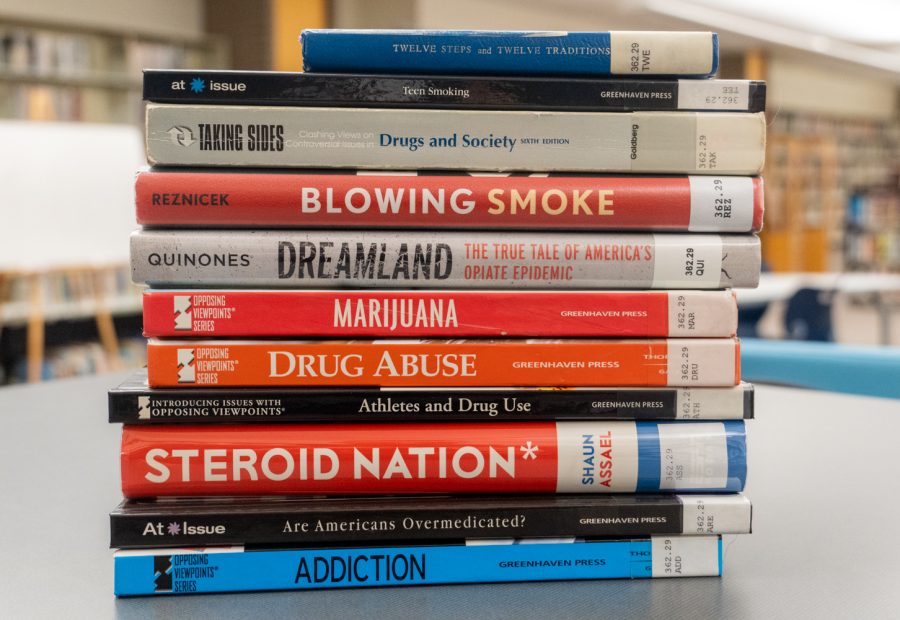Prevention Through Stronger Education
It is essential to reinforce secondary-level drug education effectively and honestly.
It is essential to develop instructions and lessons on drugs that remain lasting and impactful.
January 5, 2022
As I progress through high school, the semester of health classes I received in freshman year becomes more of a distant memory. Even the middle school anti-drug rallies fade in my mind, and many times, the only drug-prevention education I can definitely remember are three simple words: just say no.
The best remedy for drugs in a society has always been prevention, but it is important to frame drugs honestly and without stigmatization. “Just say no” is a vast oversimplification and assumption. It does not take into account a multitude of risk factors, such as home life, poor social skills, and academic difficulties.
It’s easy to assume that this advice would help—after all, it makes intuitive sense that telling a young child to say no to drugs would make the message to stick into the future—but researchers have found that approaches including social interaction work better than simply providing information.
There is also the issue of stigmatization regarding drug abuse and recovery. Often, people think that addicts or those in recovery have poor character or are mentally weak, when in reality, a number of complicated social and interpersonal risk factors can lead to addiction.
Jeff Longo is North Allegheny’s Student Assistance Program Coordinator, meaning that he offers support and assistance to all students who are struggling with anything that interferes with their ability to succeed. When asked about how he would improve drug education, Longo said, “There is a terrible stigma associated with substance abuse, and I think that stops students from getting help. It stops parents from being willing to work with the school and others to accept help.”
An excellent case study for flaws in drug education is the Drug Abuse Resistance Education program, otherwise known as D.A.R.E. The organization was formed in 1983, and it is now regarded as one of the most prominent failures at reducing drug use. It was a program meant for teenagers that promoted the “just say no” message, and in most cases, it had little effect on rates of drug use. At times, it even had adverse effects, as teens would grow curious about drugs because of the program.
What D.A.R.E.’s failure proved most of all was that scaremongering does not work. Teenagers were simply too good at finding the parts of the message that were exaggerated.
Health classes and anti-drug prevention campaigns have progressed a lot since D.A.R.E., using the program as a lesson in what not to do.
Further studies brought insight into how to create an effective drug prevention program. The National Institute on Drug Abuse found that the three core elements for research-based drug prevention programs are structure, content, and delivery.
While schools usually have good structure, there is still a fair amount of exaggeration in some prevention programs, making it pivotal to be completely honest with students. It is also important to regularly provide information about recovery and resources as well.
“We need to understand that people in recovery are in a lifetime process. Depending on how bad the situation is, people don’t just ‘recover’ overnight,” Longo said, “There’s a strong need for this kind of [recovery] education to understand addiction, to understand recovery, to understand relapse, so that we all can be supportive to those with an addiction.”
North Allegheny especially has many resources for those who are addicted to drugs, but many students don’t know about them, either out of stigma or insufficient representation.
“It’s a constant challenge to make the resources known,” Longo said. “We do our best to put it out there through publications. It’s a shame that it’s not more widely known, but we’re conscious of that. We’re making efforts to try to get the word out there.”
Needless to say, students need to know where they can reach out for help, and friends and family must know what is going to happen in recovery centers. With knowledge and education come hope and assuaged fears, allowing those close to people in recovery to be able to offer optimal support.
But the largest hurdle comes with delivery.
Psychologist Pim Cuijpers of the Netherlands Institute of Mental Health and Addiction found in her review of 30 studies published in 2002 that the most effective drug awareness and prevention programs had interactive instructional moments that teach students the social skills they need in order to refuse drugs. Drug information alone was ineffective, and it was only when programs combined skills, methods, and services that these programs worked.
Programs that last years are also particularly effective. Research has shown that benefits in middle school prevention programs diminish as those programs do in high schools. The future for a successful drug education system is de-stigmatized and interactive, with more of a focus towards recovery.
“In my opinion,” Longo said, “there’s a need in the curriculum—which is very difficult—for ongoing education that is age-appropriate, starting in elementary school but continuing through middle school and high school. You get little bits and pieces in health class, but there’s a need for a lot more than that.”















Jeff Longo • Jan 5, 2022 at 10:29 am
Anyone reading this article who is concerned about his/her/their own misuse or abuse of substances, or that of someone they care about, please talk to an adult you trust to try to get help. Students can refer themselves or others to the Student Assistance Program (SAP). Stop by Mr. Longo’s office (in the back of the Main Office) or email him at [email protected]. SAP is here to listen and support you without shame or judgment!